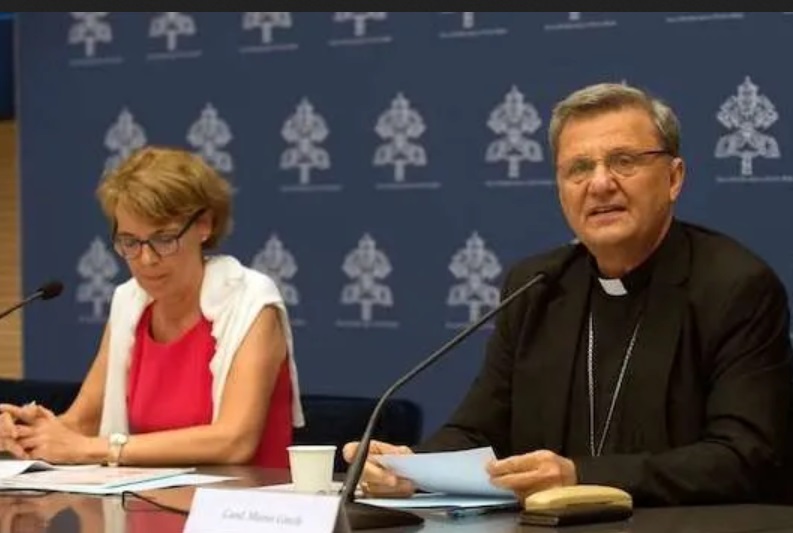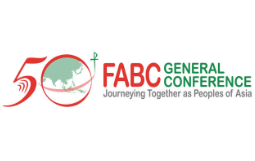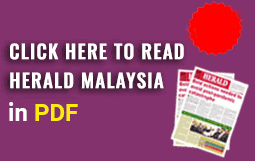Synod on Synodality to open debate on wide range of hot topics
Decision-making methods, the place of women, migrants, homosexuals, cultural traditions, climate change, priestly formation. Rarely has a document from Rome covered so many themes in such an open manner.
Jun 30, 2023

By Loup Besmond de Senneville
Decision-making methods, the place of women, migrants, homosexuals, cultural traditions, climate change, priestly formation. Rarely has a document from Rome covered so many themes in such an open manner.
But they are all there in the new Instrumentum laboris (Latin for “working document”) for the first of two assemblies of the Synod on Synodality, which will take place October 4-29 and bring together bishops and lay people to reflect on the future of the Roman Catholic Church.
Officials at the Synod’s secretariat released the new 60-page text on June 20 at a press conference in Rome.
Through a series of questions addressed to the participants of the Synod on Synodality, which Pope Francis launched in October 2021 and which has already led to consultation with Catholics worldwide, the authors of the new document outline the future of what they call a “synodal Church”, one that is more attuned to its grassroots. In fact, the word appears 71 times in the text, which the Synod secretariat issued in Italian, English, French, Spanish and Portuguese.
The Instrumentum laboris is intended to organise the work of October, but “is not to be a first draft of the Final Document of the Synodal Assembly”, warned the authors. Nevertheless, the series of questions that it presents over 33 of its pages still offers a fairly clear vision of the Church.
Recognising “what is good” in the world
Beyond the first part, which is a spiritual presentation on the concept of synodality, the Synod secretariat outlines, through the themes chosen or the way of asking its questions, the vision of a Church more attentive to the grassroots, where the question of margins is omnipresent. It is an institution of believers who are called upon to play a more active role, and which must rethink its way of announcing its message to the contemporary world. This is a far cry from a fortress Church, under siege, which should be defending what it has achieved.
“What is the attitude with which we approach the world? Do we know to recognise what is good and, at the same time, commit ourselves to prophetically denounce all that violates the dignity of persons, human communities and creation?” asks the working document. It explains that such a question is necessary in view of the “abuse crisis” that has shaken the Church.
“To the penitence it owes to victims and survivors for the suffering it has caused, the Church must add a growing and intensified commitment to conversion and reform in order to prevent similar situations from happening again in the future,” it states.
Integrating “LGBTQ+ people” in the Church
The text raises the question of integrating “those who do not feel accepted in the Church, such as the divorced and remarried, people in polygamous marriages, or LGBTQ+ Catholics”.
It is notable that this is the first time that such a Church document from Rome uses the acronym, rather than homosexuals or people with same-sex attraction. Additionally, the document expresses concern about “racial, tribal, ethnic, class or caste-based discrimination, also present in the People of God”. On the other hand, certain themes are omitted, such as bioethics and the pre-conciliar liturgy.
Moreover, the place of women, which was one of the major themes that came up in consultations with Catholics around the world, is also a central issue of the working document. The text goes so far as to raise the question of women deacons, without explicitly mentioning the ordination of women priests, to which Pope Francis has repeatedly stated his opposition.
“What new ministries could be created to provide the means and opportunities for women’s effective participation in discernment and decision-making bodies?” question the document’s authors.
Another highly sensitive topic the Synod secretariat does not side-step is the ordination of married men.
“As some continents propose, could a reflection be opened concerning the discipline on access to the priesthood for married men, at least in some areas?” the document proposes.
This issue was already addressed without being resolved at the last Synod assembly held in Rome, which was devoted to the Amazon.
Addressing the issue of the authority of Catholic leaders, clerics and laity alike, and the need to adapt their formation, the Synod secretariat goes so far as to question the role of priests, bishops ... and even the Pope.
“How should the role of the Bishop of Rome and the exercise of his primacy evolve in a synodal Church?” it asks.
It’s a question previously unimaginable in a document published by the Vatican. --LCI







Total Comments:0